What to expect at the Cave and Basin National Historic Site located within Banff National Park? Is it worth a visit? We were about to find out.
Last updated: May 22, 2024
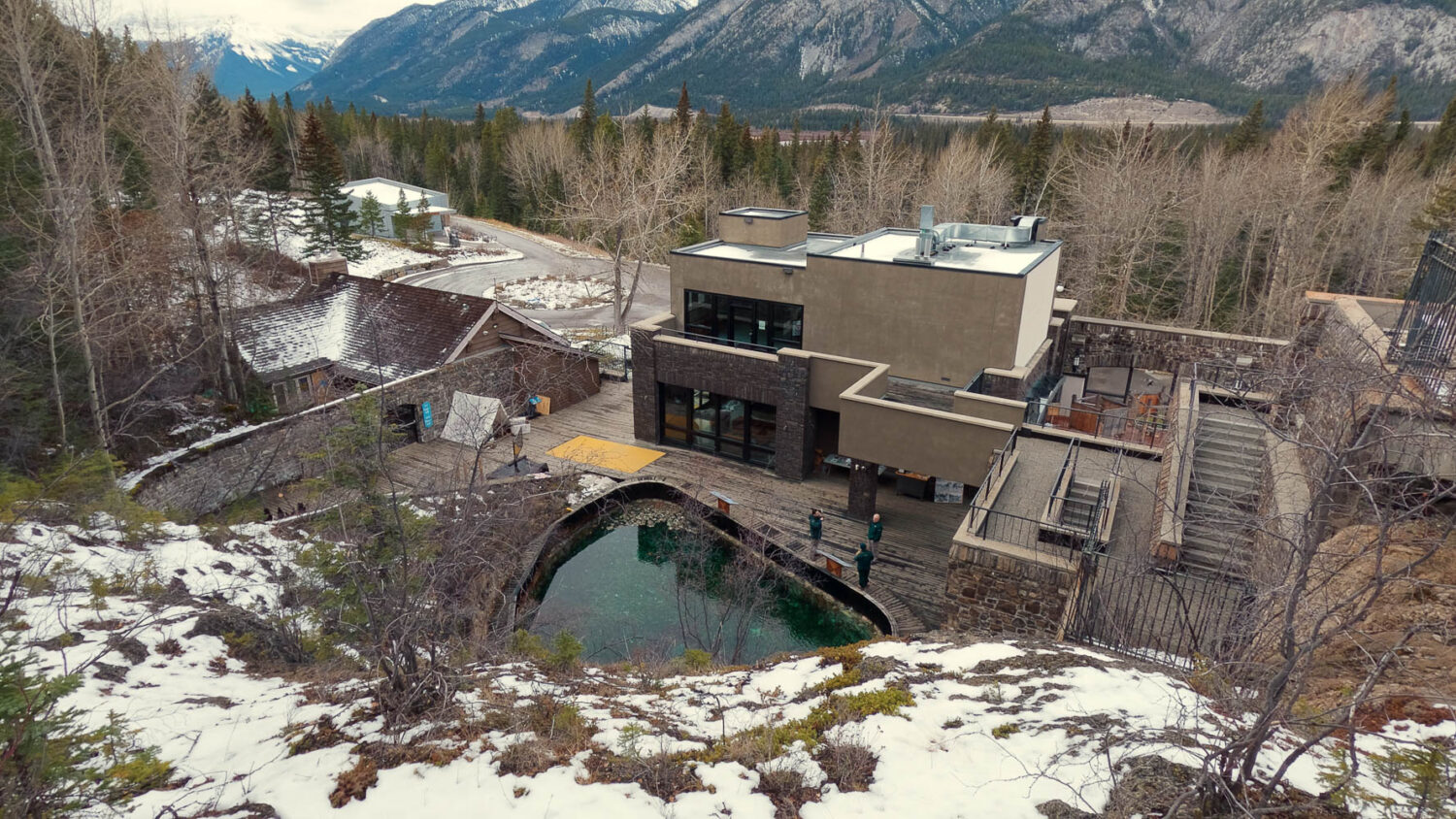
Why Should You Visit the Cave and Basin National Historic Site?
The Cave and Basin National Historic Site has played an important role in the life of the Indigenous People for 10,000 years. In 1883, the discovery of several thermal springs, trapped inside the cavern, led to the creation of the first national park in Canada.
Parks Canada official website was discreet in releasing the information about the Cave and Basin National Historic Site. Yet these scarce details were enough for me to add the place to our Banff National Park itinerary.
Digging deeper into the history opens a door into the minds and hearts of people that had inhabited the region centuries ago. Learning more about a specific location helps fully understand its place and significance in the modern world. It dissects our effort to preserve the area for future generations.
The Cave and Basin National Historic Site, a place that had inaugurated a new system of protecting natural resources of Canada, promised to tell us far more than its humble size allowed.
Reluctantly I typed the Cave and Basin National Historic Site on a page-like screen with a question mark next to it. Banff during the winter season was unpredictable. Days shrank. Would we have enough time to step inside the Cave and Basin National Historic Site located in the town of Banff in the Canadian Rocky Mountains? I didn’t know.
What Can You Expect to See Inside the Cave and Basin National Historic Site?
I envisioned that the Cave and Basin National Historic Site would look slightly like geyser basins of Yellowstone National Park in the neighboring USA. Not as big and diverse, though.
I pictured it boasting one large thermal pool with enormous bubbles popping out on the surface – a sure sign to stay away. But unlike Yellowstone’s treasures, the vibrant lake with warm water would dwell inside a cave.
Once inside the Cave and Basin National Historic Site, I quickly realized how wrong I was. Instead of one thermal pool, two hot springs adorned the place. A spacious indoor museum narrated its history. And a couple of boardwalks and easy trails introduced the visitors to the mountainous surroundings outside of the site.
But let’s start from the beginning.
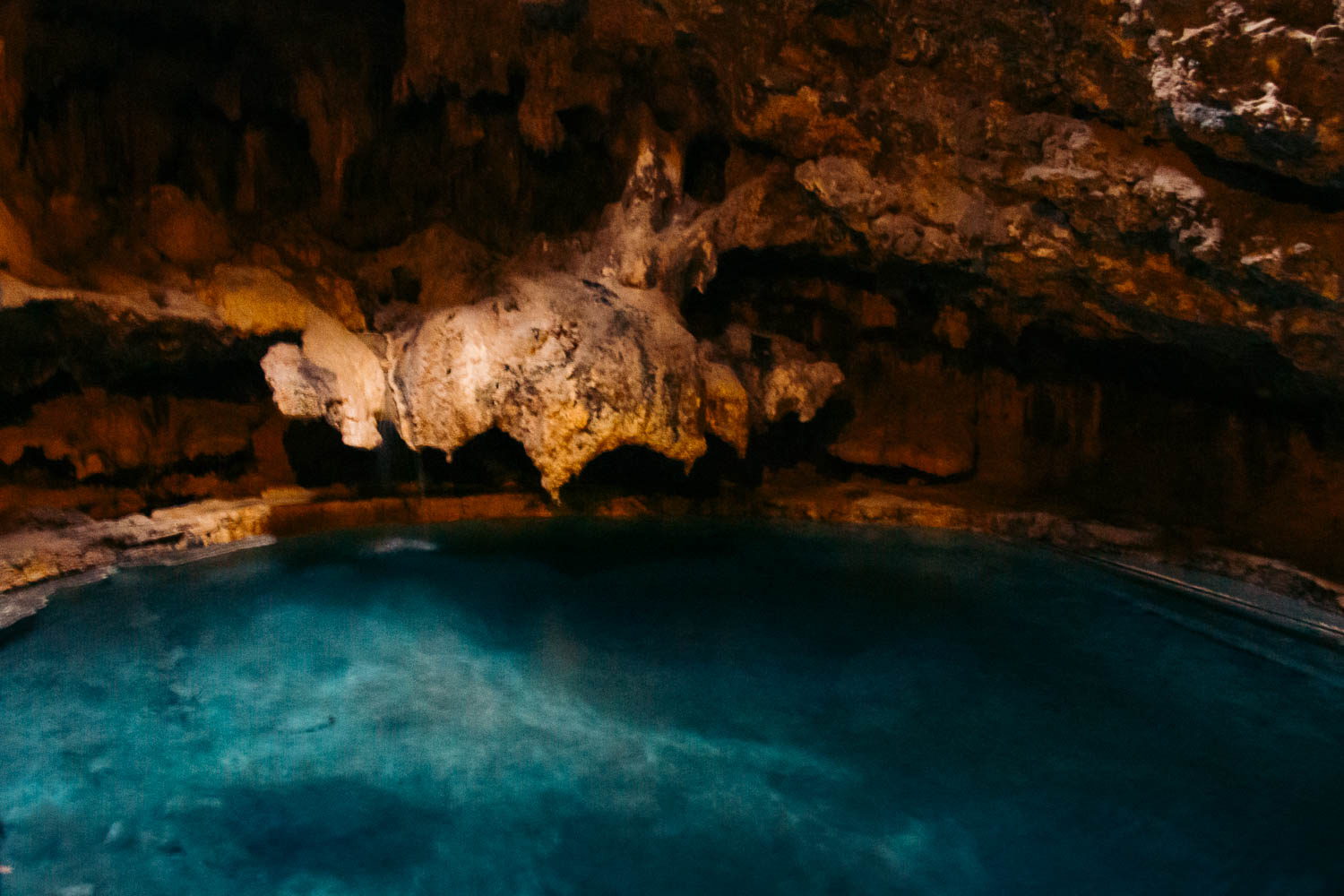
Visit the Cave and Basin National Historic Site
It was snowing hard in Banff National Park. After stopping for a quick exploration in Yoho National Park the previous day, Roshan persuaded us to skip Jasper National Park and spend the entire day in the Banff domain.
With the significantly modified itinerary, we had time not only to visit the Cave and Basin National Historic Site, but also browse around souvenir shops and cafes in downtown Banff. Two hours in the town, exhausted and drained of all the energy, I was ready to get back into the wild.
The wild is the least appropriate word to describe the Cave and Basin National Historic Site. Located roughly 2 kilometers southwest of downtown Banff, the natural cavern is accessed through a spacious visitor center. Several observation decks and raised boardwalks decorate the outdoor area.
A vehicle-restricted paved path and road lead from a large parking lot at the end of Cave Avenue to the main building of the Cave and Basin National Historic Site.
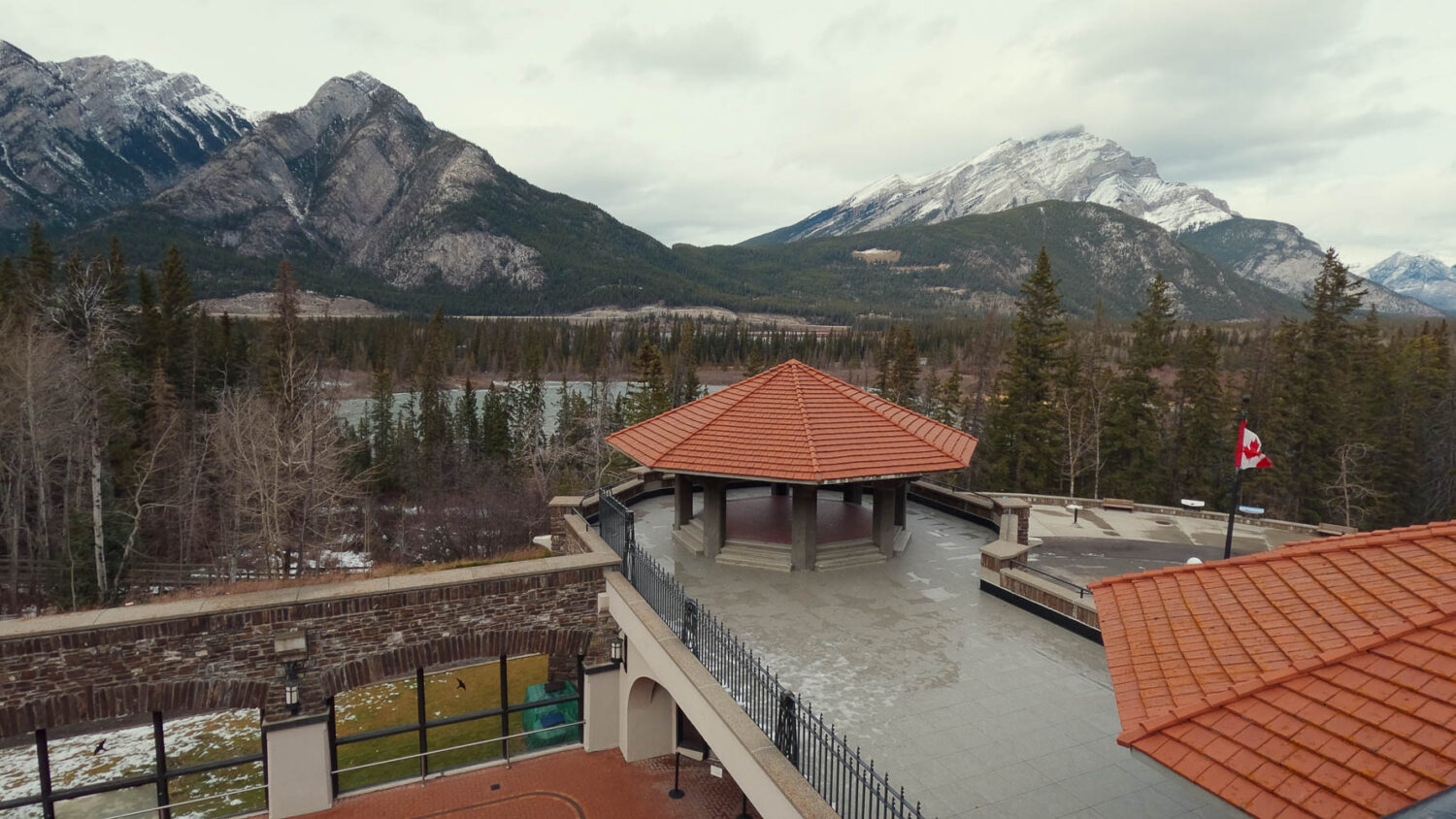
The Cave and Basin National Historic Site: Admission
Although the Cave and Basin National Historic Site is nestled within Banff National Park, a separate ticket is required to get inside. Yet if you have a Parks Canada Discovery Pass displayed in the windshield of your car, bring it over. The annual pass includes admission to all national parks and sites.
Daily
- Adult: $8.50
- Senior (65 years of age and over): $7
- Youth (6 to 17 years of age): free
If you long to see acclaimed Banff Hot Springs, consider purchasing a Thermal Waters Pass. The ticket includes single entry to the Cave and Basin National Historic Site and Banff Upper Hot Springs.
Thermal Waters Pass
- Adult: $22.75
- Senior: $19.25
- Youth (3 to 17 years of age): $14.25
- Child (under age 3): free
- Family (up to seven people arriving in a single vehicle): $71.25
- Extra youth: $7.75
TIP: Read our latest article to learn more about how to visit national monuments and parks in Canada and the U.S.
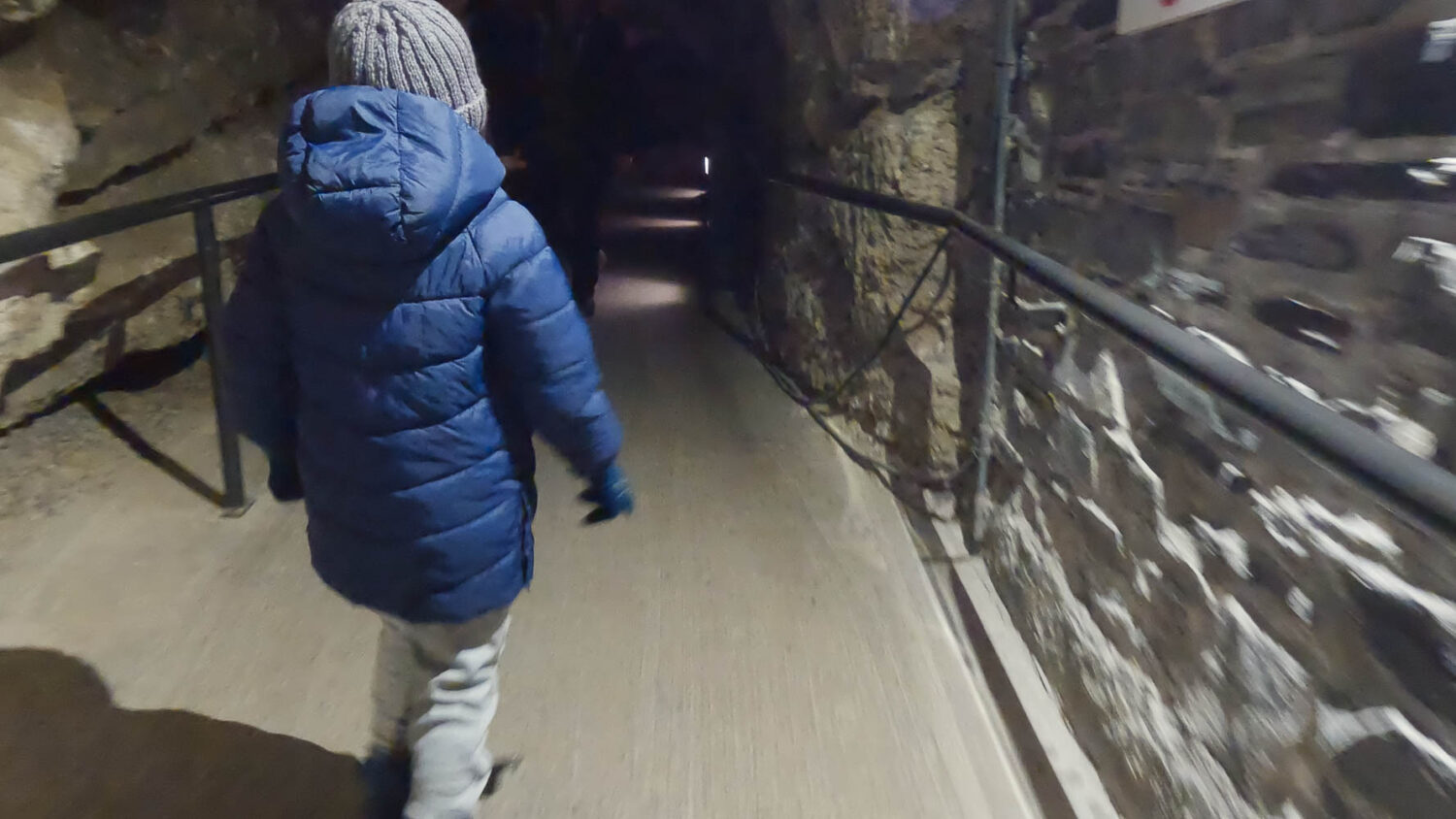
Inside the Cave
The journey into the heart of the Cave and Basin National Historic Site starts to the left of the ranger desk. A short narrow corridor leads into an open room that you’ve probably glanced into through large windows from outside.
A couple of exhibits occupy the hall, letting you take an initial dive into the history and geology of the area.
Straight ahead, two entrances sit next to each other. One, marked with a large “Cave” sign above it, was the main reason we came to the Cave and Basin National Historic Site. The second, with the word “Museum” next to it, left Dylan less enthusiastic for now.
So naturally, we chose the passage into the cave. The short tunnel terminated at a medium-sized thermal pool enclosed by a dim cavern. But even in this light, your eye could easily register the turquoise color of the hot spring with hazy vapor above it.
The cave was simple and impressive at the same time. With only one inhabitant that occupied most of it, the natural chamber exuded an air of tranquility and subtle power. Only a rotten smell (Roshan described it as “the hard-boiled egg odor”) reminded us of the vast geyser basins in Yellowstone National Park. The similarities, however, ended here.
The distinctive odor is released when sulphate-reducing bacteria break down pyrite and gypsum, two sulphur-bearing minerals dissolved in the Cave and Basin’s hot springs. Several other sulphureous hot springs on the northeast flank of Sulphur Mountain share a similar pattern.
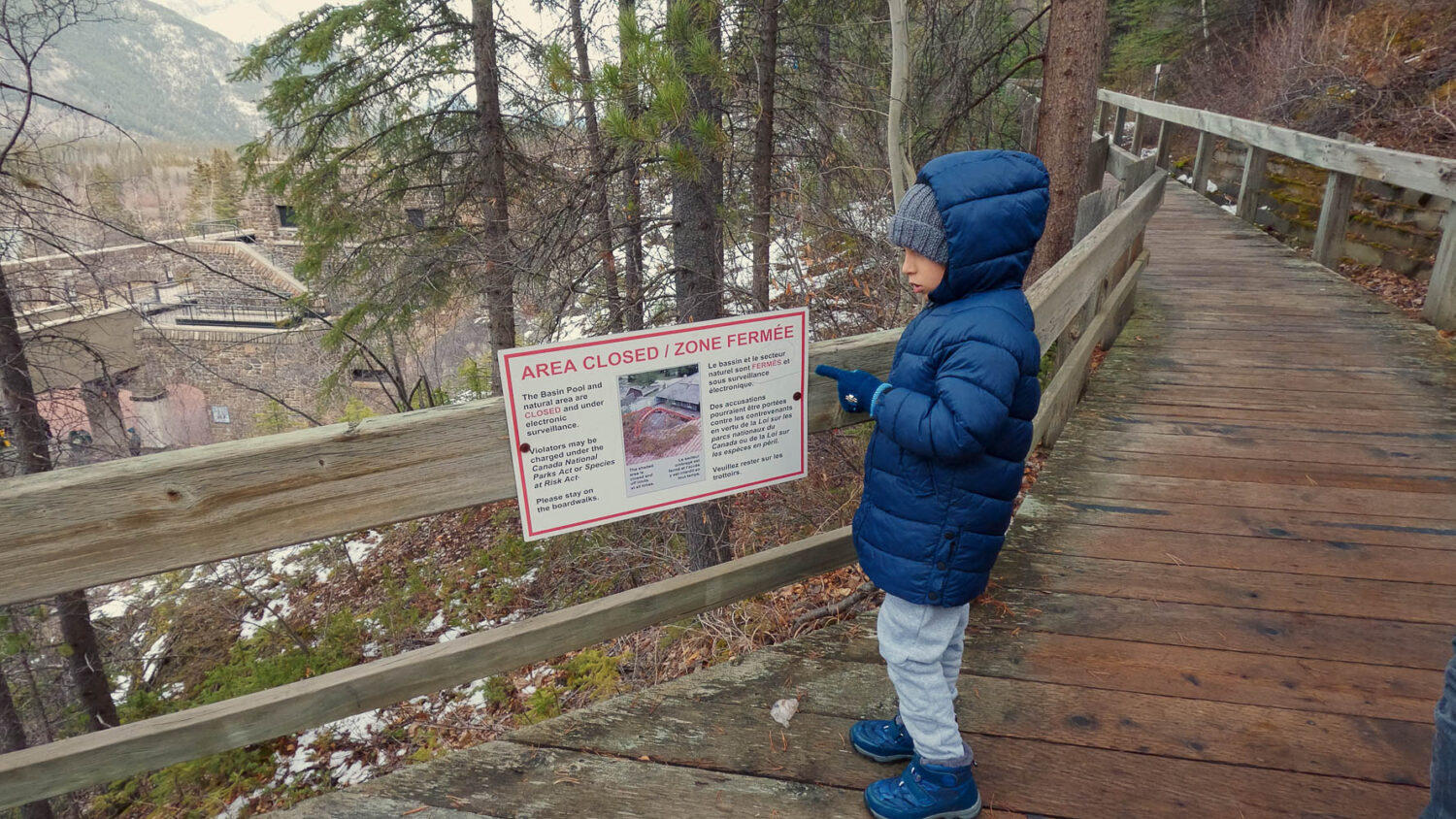
The Museum
Adjoining the grotto, the Museum is a wide-opened door to the history of the Cave and Basin National Historic Site. The big hall is packed with permanent and temporary exhibits.
Some displays bring back faces of visitors, wrapped in beach towels and happily posing in front of a camera during the time when bathing was allowed in the hot springs of the Cave and Basin National Historic Site. Others increase awareness of Canada’s World War I internment operations that took place between 1914 and 1920.
Stroll down the hall, stop frequently to read detailed signage on the wall or watch a short documentary before heading outside to the second thermal pool.
The Upper Thermal Pool
The second thermal pool sits on the upper deck, enclosed with the wooden boardwalks. With the wind distilling the air, the rotten odor that assaults your senses at the lower pool vanishes. The blue color of the water becomes even brighter in response to day light directly penetrating the pool.
Unlike the cave pool with a tiny opening at the ceiling through which scarce light forces its way in, the upper hot spring is more eager to reveal heat-loving creatures that reside inside the pond.
You may also meet a ranger or two squatting at the pool in search of the minute organisms and ready to fill up any information gaps you may still have regarding the importance and history of the Cave and Basin National Historic Site.
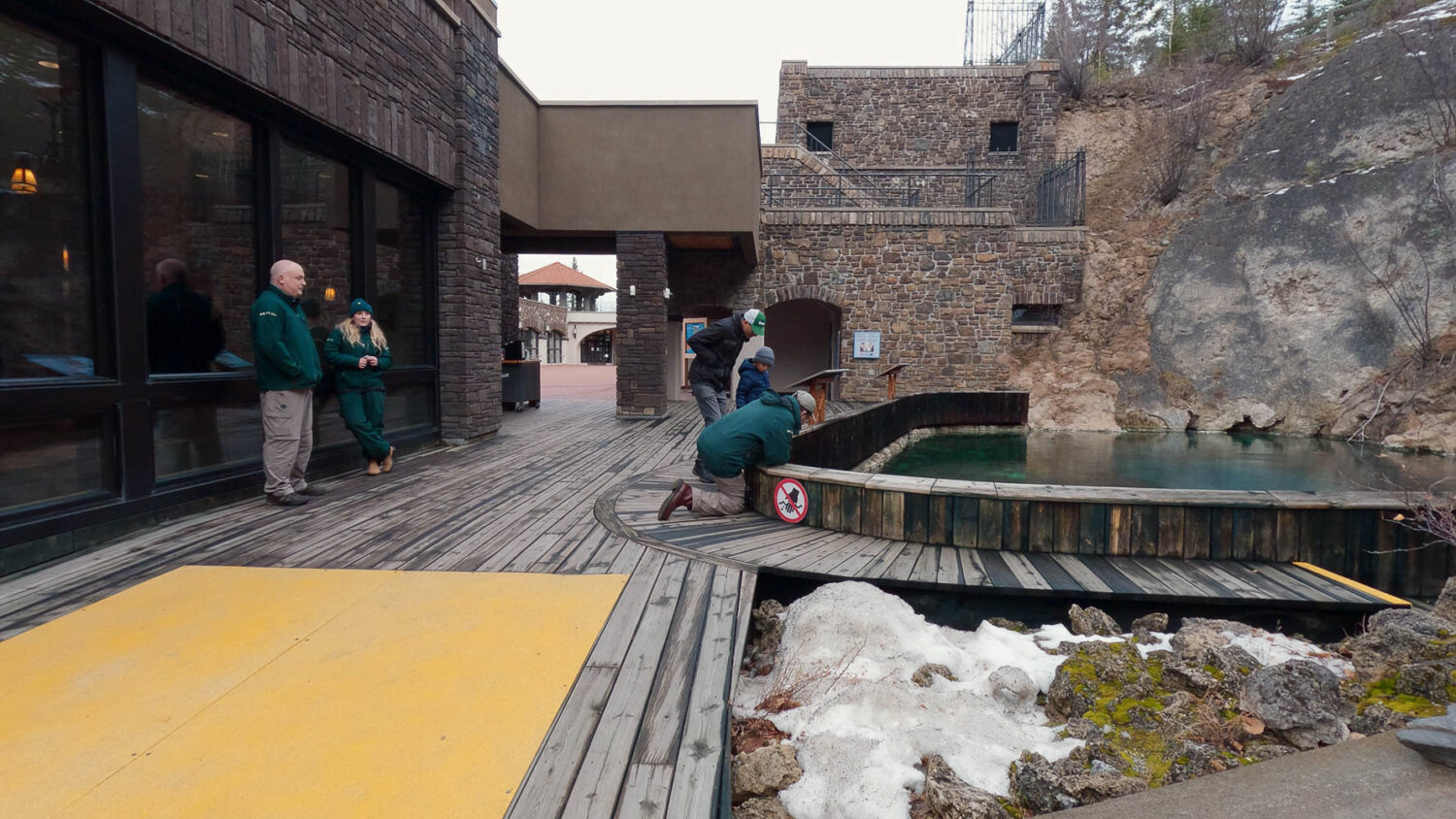
The Story of the Cave and Basin National Historic Site
Human habitation in the Bow Valley, home to the Cave and Basin National Historic Site, dates back 10,000 years. Indigenous People’s stories about the cavern with warm water further confirm their use of the thermal pools for centuries before they received national recognition. The official “discovery” of the Cave and Basin, however, happened in the late 19th century.
In the fall of 1883, three railroad workers, William and Tom McCardell and their partner Frank McCave, stumbled upon a dark cavern. The “discovery” promised profit. Inspired by the ever-growing spa popularity in Europe, the men built a small cabin at the entrance to the cave and a fence around it.
The next step was to petition the Canadian government for ownership of the land. Yet there were others who also wanted to claim rights on the Cave and Basin area. After a complicated legal battle, in 1885, the place became Hot Springs Reserve.
Over the next few years, the boundaries of the protected land expanded significantly. The area was named Rocky Mountains National Park, the first national park in Canada. By 1930, after yet another name change, Banff National Park was officially born.
Can You Swim at the Cave and Basin National Historic Site?
There was a time when you could go to the Cave and Basin National Historic Site with a towel wrapped around your neck and flip-flops on your feet. Never mind that the water wasn’t even hot, just lukewarm.
Bathing in the naturally heated swimming pool was a favorite activity of the locals and visitors from 1914 until 1994.
No swimming at the Cave and Basin National Historic Site is allowed today. Bathing disturbs fragile heat-loving creatures, in particular Banff Springs snail. Scientifically known as Physella johnsoni, the endangered species can be found only in the thermal springs in Banff National Park.
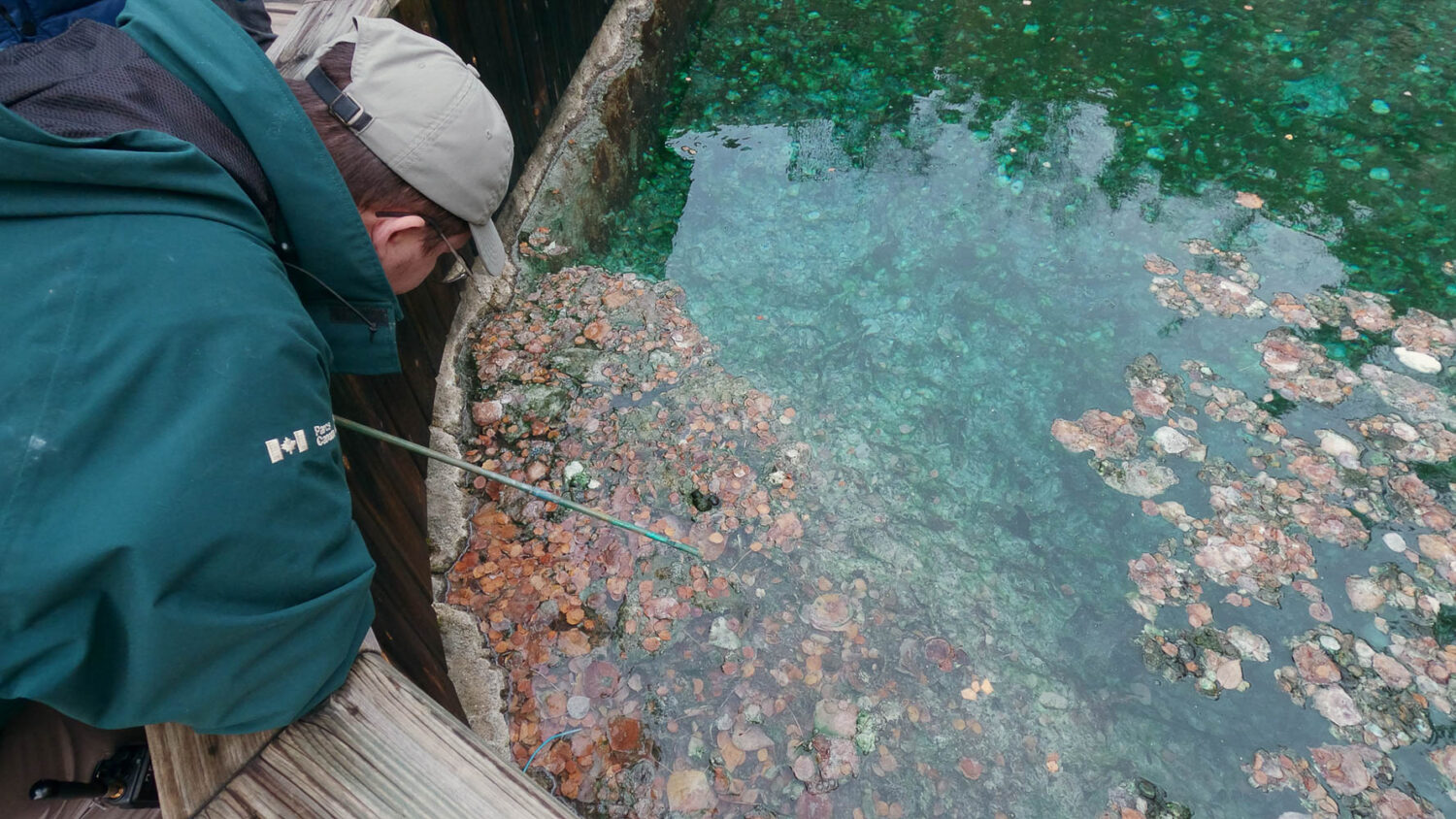
Hiking Trails Near the Cave and Basin National Historic Site
If you feel like you’ve been dragged to the Cave and Basin National Historic Site while all you want to do is to hike in the mountains, then there is good news for you. 4 trails sit right outside the historic site.
Cave and Basin Trail: Upper Boardwalk
- Distance: 0.4 kilometer
- Time: 10-15 minutes
- Difficulty: easy
More like an extension of the walk you’ve done inside the cave and on the upper deck, the Upper Boardwalk is a relatively flat trail with the views of several smaller springs and pools.
Cave and Basin Trail: Lower Boardwalk
- Distance: 0.5 kilometer
- Time: 15-20 minutes
- Difficulty: easy
Where the Upper Boardwalk focuses on the views of the Cave and Basin National Historic Site from above, the Lower Boardwalk reveals the wetlands below the structure.
Marsh Loop
- Distance: 2.8-kilometer loop
- Time: 1 hour
- Difficulty: easy
The Marsh Loop Trail runs along a wetland created by several other hot springs. In spring and summer, the area burst into bloom.
Sundance Trail
- Distance: 3.7 kilometers (one way) + 1.6-kilometer loop
- Time: 3 hours
- Elevation gain: 155 meters
- Difficulty: easy to moderate
The most challenging of all 4 trails near the Cave and Basin National Historic Cave, the Sundance Trail runs toward Sundance Canyon. The path is paved and virtually flat at the trailhead. The change in elevation follows quickly after you leave the historic site behind.
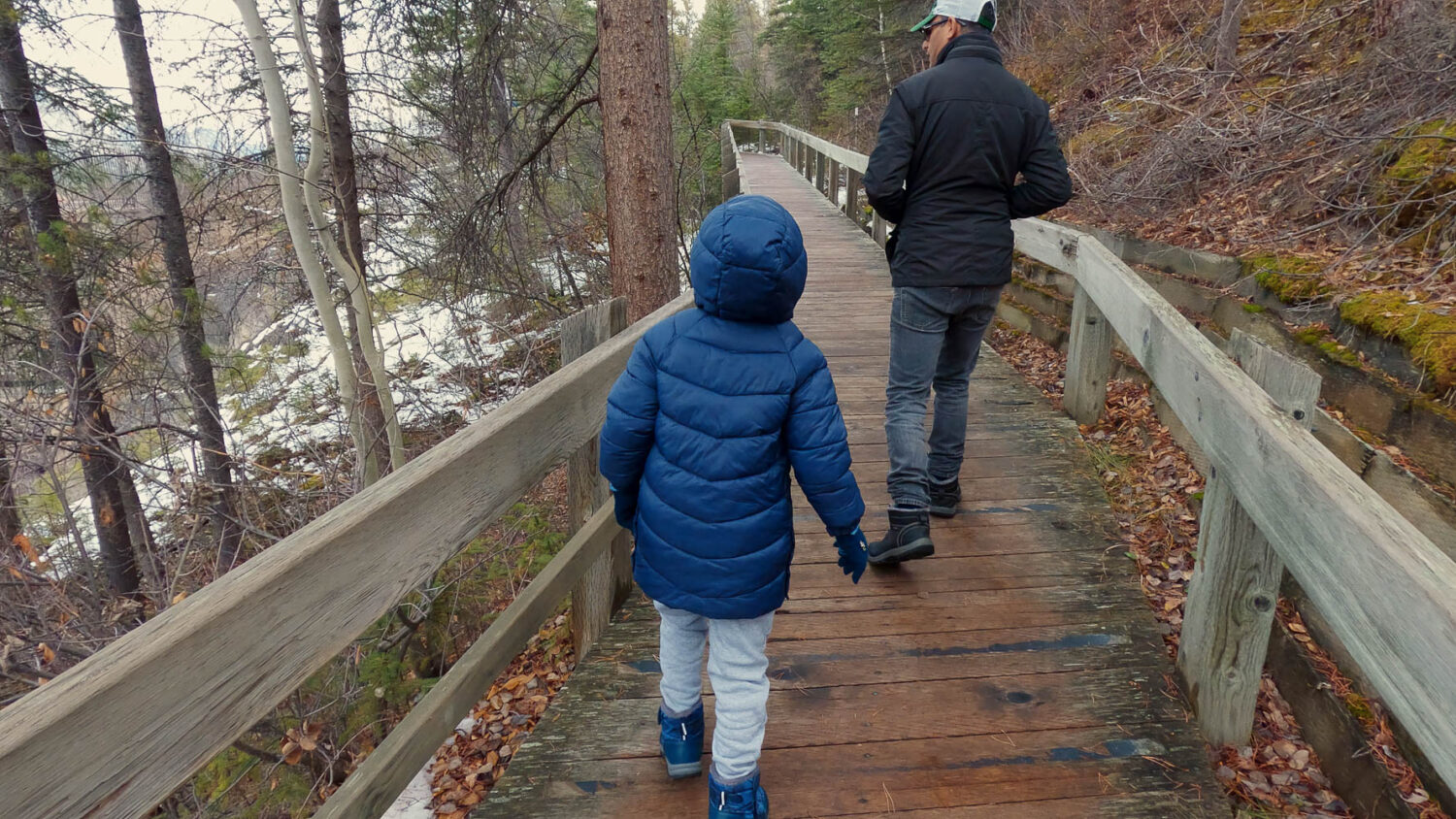
Is the Cave and Basin National Historic Site Worth Visiting?
I was puzzled with this question the entire time we spent at the location. Was the Cave and Basin National Historic Site worth visiting?
The truth is, there is no one-for-all answer. The decision whether to visit the Cave and Basin National Historic Site depends on your interests.
If you love history and need to get to the root of the matter that asked for the preservation of the area, then you absolutely must step inside the Cave and Basin National Historic Site. The little hamlet is the birthplace of Banff National Park after all. This fact itself is quite a reason to pay a visit to the oldest national monument in Canada.
The Cave and Basin National Historic Site is also a must-see place for those who are interested in hot springs and their origins. The sight of the vibrant pools with hazy clouds rising from the naturally heated water and lingering right above the surface is incredible. But the acidic smell inside the cave is not crowd-pleasing.
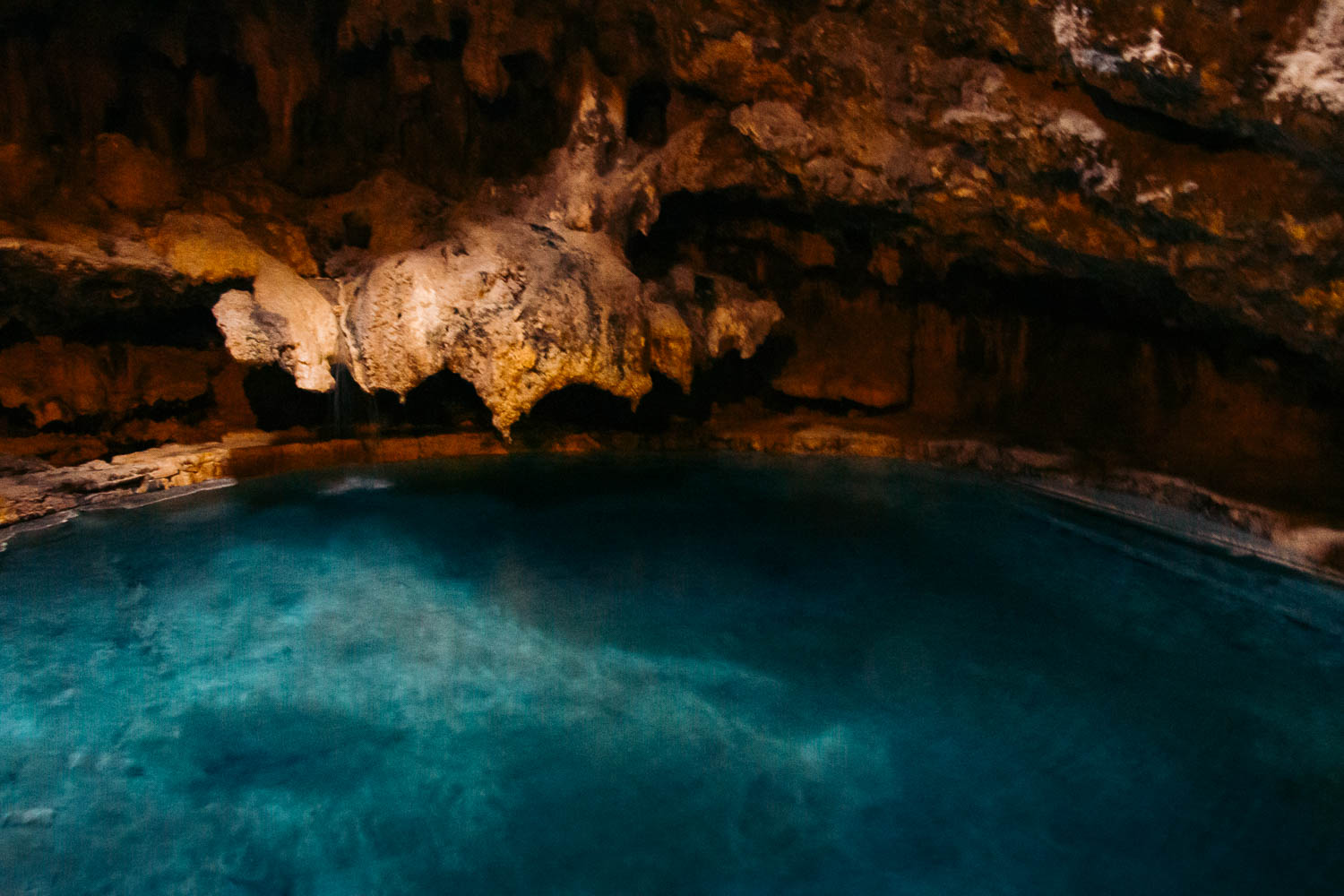
Reasons Why You May Want to Skip the Cave and Basin National Historic Site
On the other hand, if you expect to find some grand views and extraordinary sights at the Cave and Basin National Historic Site, you may feel disappointed. The place is rather small and boasts just a couple of natural attractions, carefully guarded and protected.
Furthermore, bathing in the hot springs at the Cave and Basin National Historic Site is strictly prohibited. Once caught, you will be fined (the amount is measured in a 5-digit number) and may even be imprisoned. If soaking in a thermal pool is high on your Banff itinerary, skip the Cave and Basin Site and head to Banff Upper Hot Springs.
How Much Time Do You Need at Cave and Basin National Historic Site?
The Cave and Basin National Historic Site can be a quick stop or a few-hour excursion. An average visitor spends from 30 to 60 minutes admiring the sights inside the cave, stopping for a quick history lesson at the museum, and hiking along the boardwalks outside.
An in-depth visit as well as trekking along the longer trails can take up 2-3 hours.
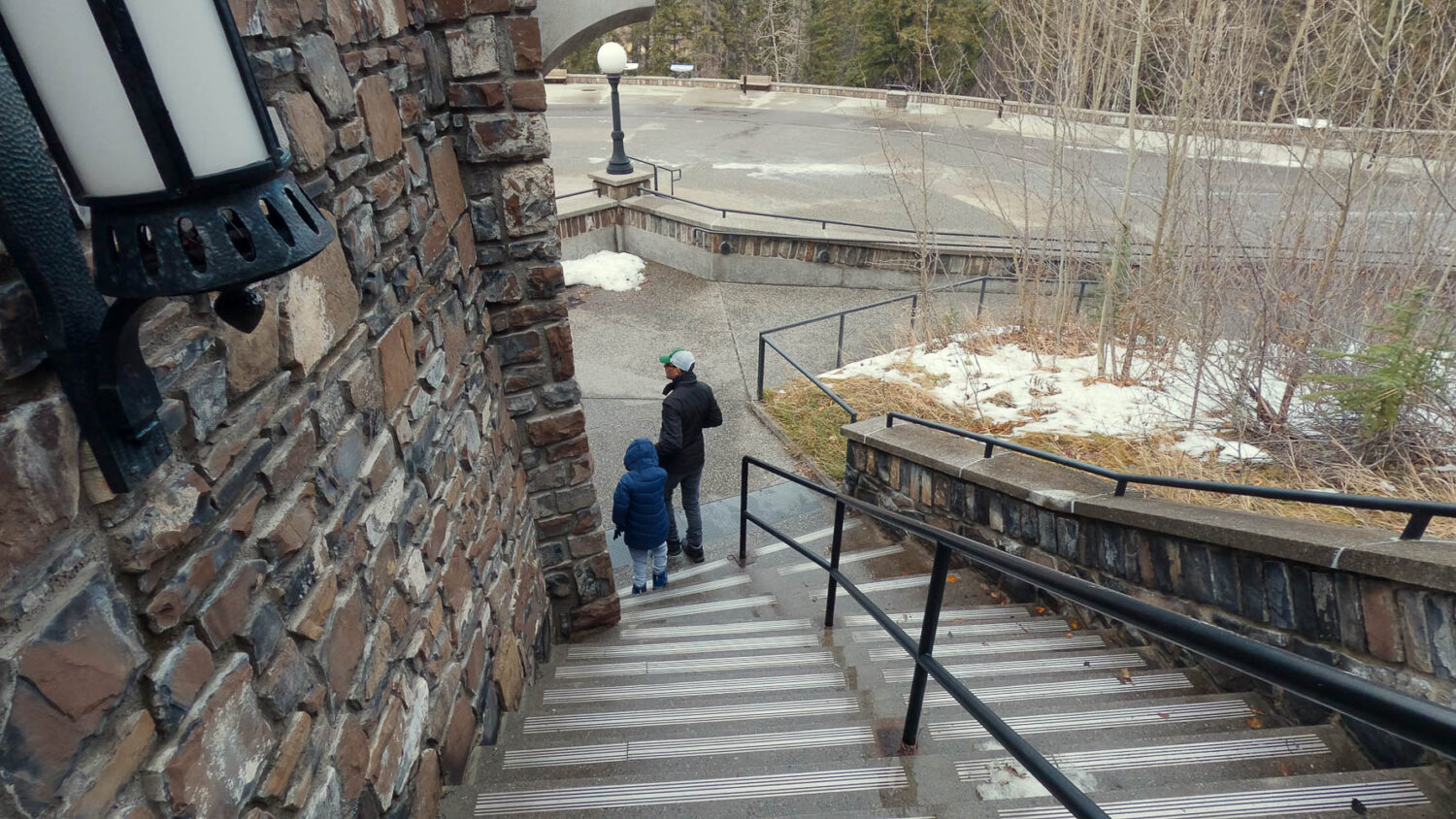
Places to Visit Near Cave and Basin National Historic Site
- Lake Louise. Lake Louise is one of the most beautiful lakes in Banff National Park, accessible all year round.
- Johnston Canyon. Johnston Canyon is famous for its gushing waterfalls that turn into icy structures in winter.
- Peyto Lake. As stunning as Lake Louise, Peyto Lake is far less busy and is a great alternative for those who loathe big crowds.